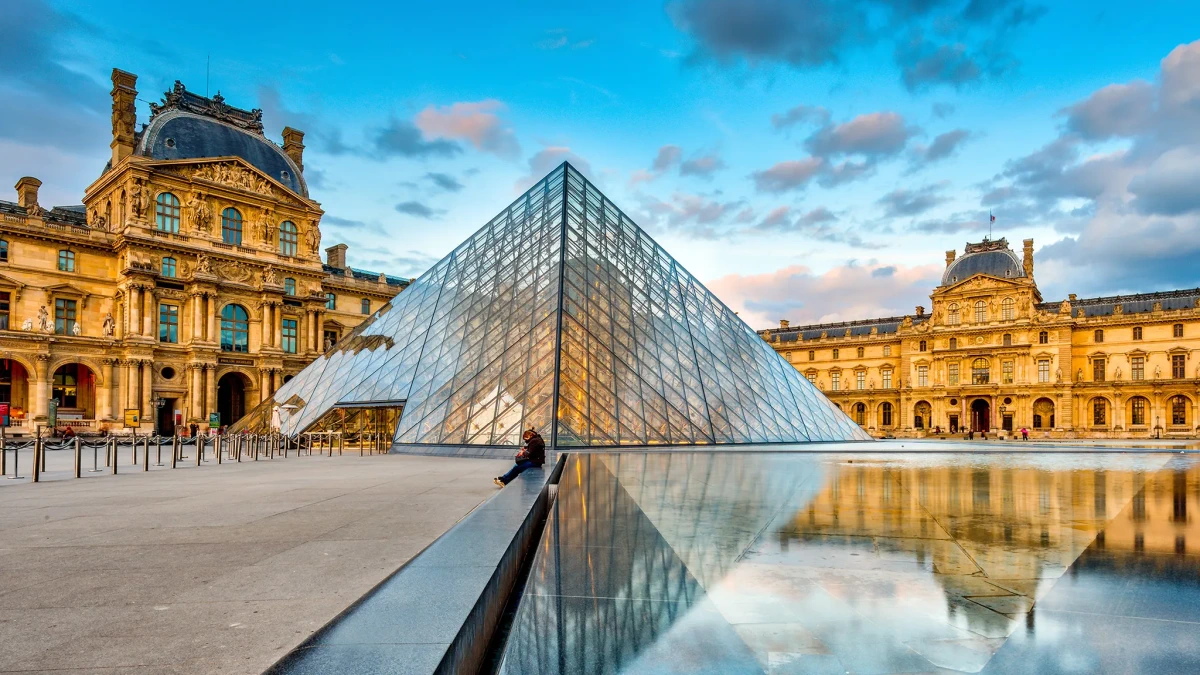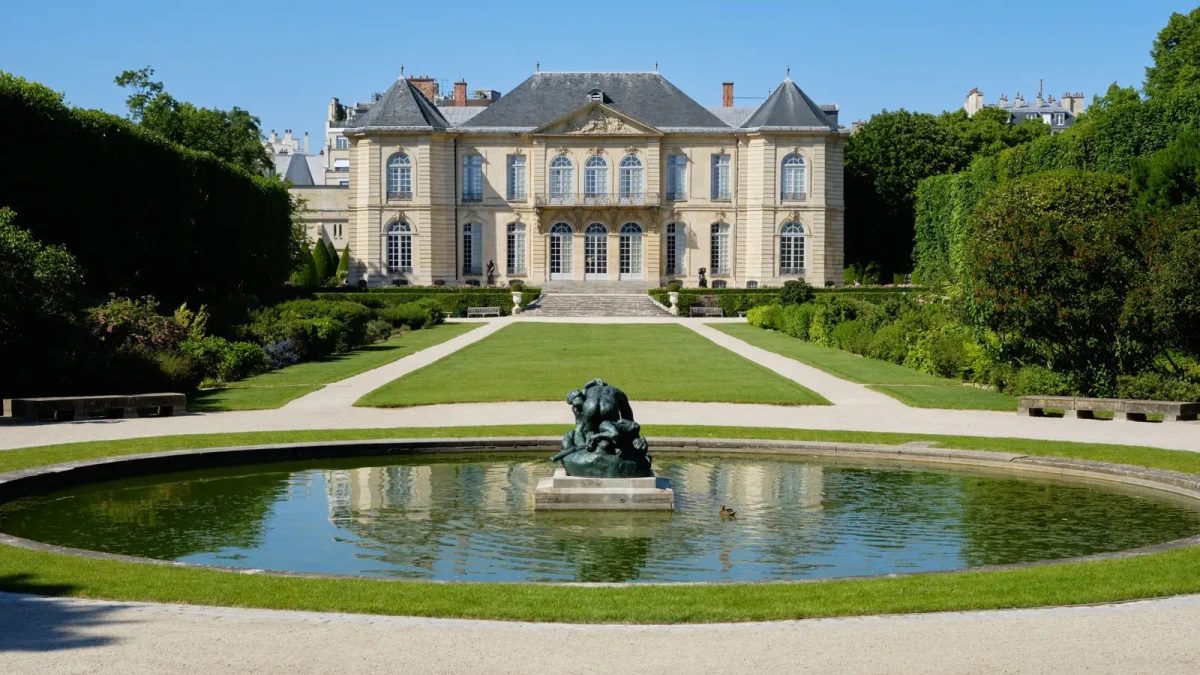The Notre-Dame Cathedral stands as an architectural masterpiece, a symbol of artistic brilliance, and an enduring testament to human history. Located on the Île de la Cité in the heart of Paris, this iconic cathedral has captivated millions of visitors for centuries with its grandeur and magnificence. From its awe-inspiring Gothic architecture to its rich historical significance, Notre-Dame is a living embodiment of the past, inviting all who enter to experience a profound connection with the essence of time.
In this article, we invite you to step inside this venerable monument, shedding light on its history, exploring its architectural marvels, and uncovering the secrets that lie within its hallowed walls. Join us on a virtual journey as we delve into the depths of Notre-Dame Cathedral, allowing you to see with your own eyes the wonders that await within.
Note: This article contains affiliate links. In case you purchase something through one of these links, we may receive a small commission at no extra cost for you. Thank you for helping us keep creating the free content on this website!
Introduction
Notre-Dame Cathedral, with its timeless beauty and grandeur, stands as a testament to human ingenuity, architectural brilliance, and spiritual devotion.
As one steps inside this iconic masterpiece in the heart of Paris, a world of awe-inspiring splendor and historical significance unfolds, inviting visitors to immerse themselves in its hallowed halls and witness the magnificence with their own eyes.Entering Notre-Dame Cathedral is akin to stepping into a different realm, where the sacred and the artistic converge in perfect harmony.
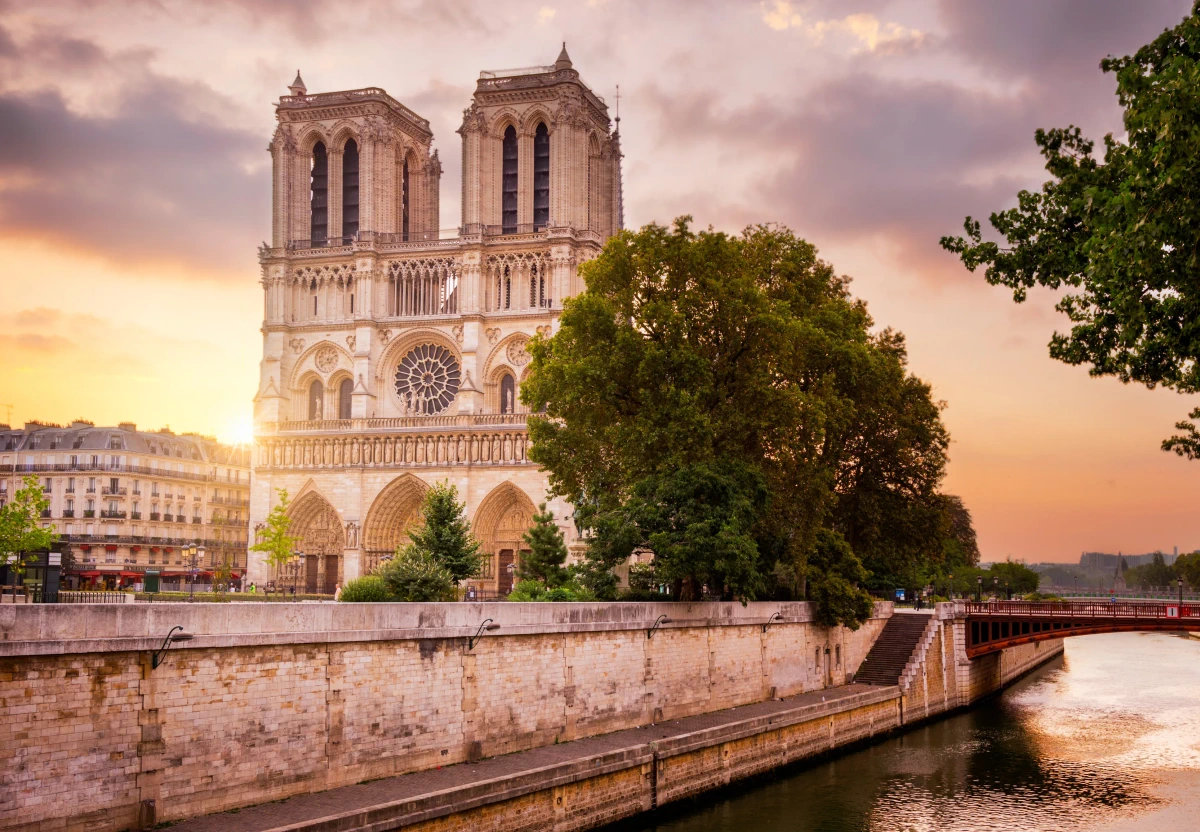
The vastness of the interior space immediately commands attention, as the eyes are drawn upward towards the soaring vaults and the interplay of light and shadow. The stone pillars, reaching skyward like ancient sentinels, create a sense of majesty and stability. The sheer scale of the cathedral's design is awe-inspiring, reminding visitors of the architectural prowess and visionary thinking of those who brought it to life.
As one explores further, intricate details and artistic treasures emerge at every turn. The stained glass windows, a hallmark of Gothic architecture, adorn the walls with a kaleidoscope of colors, casting ethereal light upon the stone floor. These windows depict biblical scenes and saints, their vibrant hues capturing both the eye and the imagination.
Each panel tells a story, inviting contemplation and evoking a sense of reverence.The rose windows, particularly the famous north rose window, captivate with their intricate tracery and mesmerizing patterns. These masterpieces of craftsmanship serve as focal points, drawing visitors into a world of transcendent beauty.
The intricately carved stone decorations, known as grotesques and gargoyles, add a touch of whimsy and intrigue to Notre-Dame's interior. These mythical creatures, perched high on the cathedral's exterior and peering through the windows, seem to come to life within the walls. In conclusion, stepping inside Notre-Dame Cathedral is a transformative experience that lingers in the hearts and minds of all who have had the privilege to visit. Its grandeur, architectural intricacy, and spiritual significance inspire awe and reverence.
As visitors explore its interior, they become witnesses to centuries of human achievement, artistic mastery, and unwavering faith. Notre-Dame Cathedral stands as a timeless testament to the power of human creativity and serves as a beacon of beauty, inviting us to step inside and see with our own eyes the majesty that unfolds within its sacred walls.
Its cultural and historical significance earned it the prestigious title of a UNESCO World Heritage site in 1991.
The History of Notre-Dame Cathedral
The Notre Dame Cathedral, located in the heart of Paris, France, has a rich and fascinating history that spans over eight centuries. As one of the most iconic landmarks in the world, Notre Dame has played a significant role in French history, art, and culture.Construction of the Notre Dame Cathedral began in 1163 during the reign of King Louis VII.
The purpose was to build a grand cathedral that would showcase the growing power and wealth of Paris. The construction process took several decades, with multiple architects and craftsmen working on the project. The cathedral was built in the Gothic architectural style, characterized by its pointed arches, ribbed vaults, and soaring stained glass windows.The completion of the Notre Dame Cathedral came in 1345, almost 200 years after its construction began.
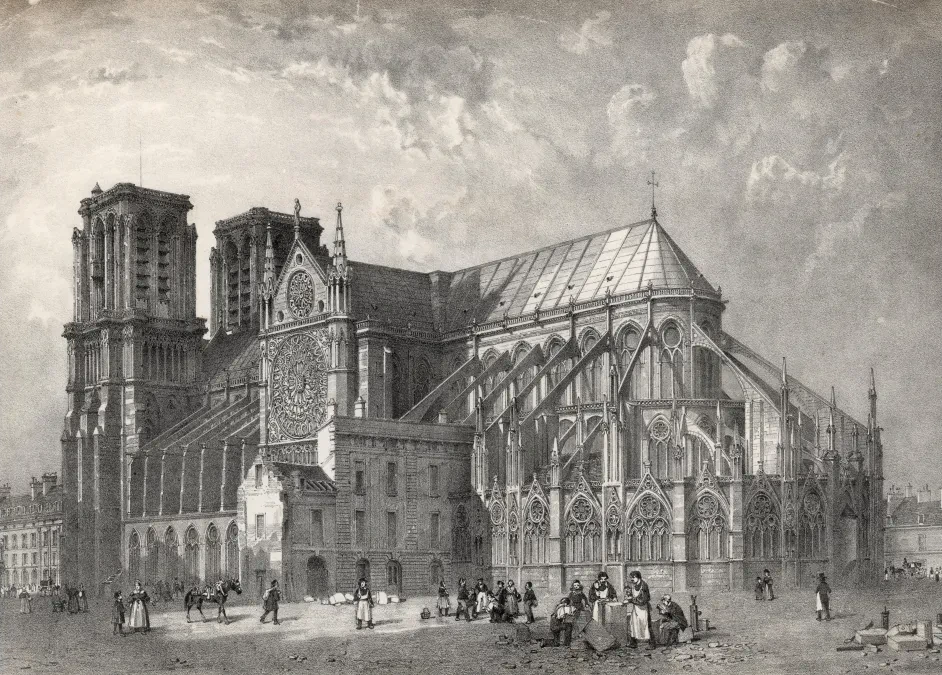
The cathedral's exterior featured elaborate carvings and sculptures depicting biblical scenes, saints, and gargoyles. Its two magnificent towers, standing at 69 meters (226 feet) tall, provided breathtaking views of the city.Notre Dame's significance extended beyond its architectural beauty. The cathedral served as the site of many important events throughout French history. It was the place where Napoleon Bonaparte was crowned Emperor of France in 1804.
The cathedral also witnessed the beatification of Joan of Arc in 1909 and hosted numerous religious ceremonies, including Christmas and Easter Masses.
However, Notre Dame faced a significant threat on April 15, 2019, when a devastating fire broke out in the attic of the cathedral. The fire engulfed the roof and toppled the iconic spire. It was a heartbreaking moment for Parisians and people around the world who held Notre Dame dear to their hearts.
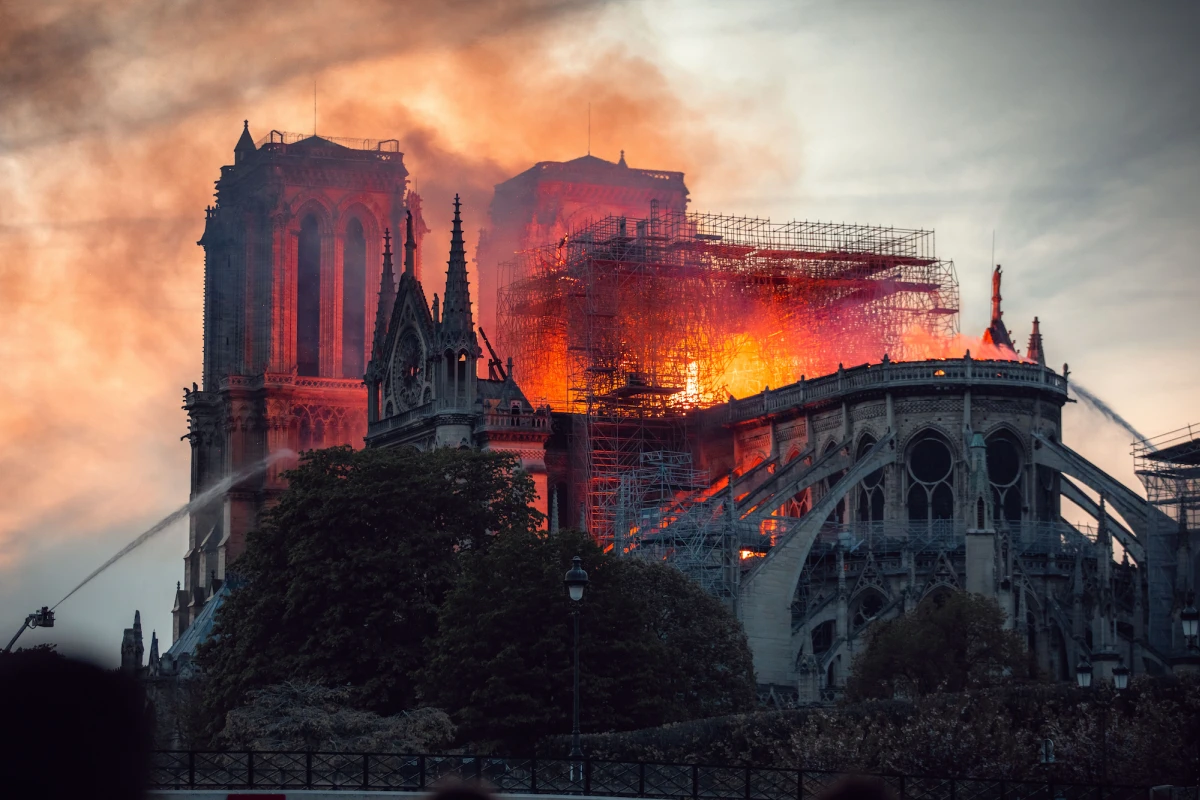
The fire sparked a massive international effort to save and restore Notre Dame. Firefighters, along with cultural heritage experts, worked tirelessly to extinguish the flames and salvage as many artifacts and treasures as possible. The outpouring of support from individuals, corporations, and governments resulted in a substantial fund for the cathedral's reconstruction.
Notre Dame Cathedral holds a special place in the hearts of millions worldwide. It represents not only the architectural prowess of the medieval builders but also serves as a symbol of French identity, resilience, and the enduring spirit of human creativity. Its historical and cultural significance will continue to captivate and inspire generations to come.
The majestic cathedral, adorned with its 20 resonant bells, experienced a drastic change as all of them, except for the colossal bourdon known as 'Emmanuel', were forcefully extracted and then melted down to forge mighty cannons.
Notre-Dame Cathedral : The Splendor of Gothic Architecture
Gothic architecture is renowned for its grandeur and intricacy, and one of the most iconic examples of this architectural style is the Notre-Dame Cathedral in Paris. Standing proudly on the Île de la Cité, surrounded by the Seine River, Notre-Dame Cathedral is not only a religious symbol but also a masterpiece of human creativity and engineering.
Its splendor lies in the remarkable fusion of structural innovation, artistic expression, and spiritual significance, making it a testament to the enduring legacy of Gothic architecture. The construction of Notre-Dame Cathedral began in 1163, and it took over 200 years to complete. The cathedral's architects, inspired by their predecessors, pushed the boundaries of engineering and design. One of the distinguishing features of Gothic architecture is the use of ribbed vaults and pointed arches.
These elements allowed for a more efficient distribution of weight, enabling the construction of taller and more expansive buildings. Notre-Dame Cathedral stands as a testament to the genius of the Gothic architects who achieved unprecedented heights and an airy luminosity through the use of pointed arches and soaring vaults.
The facade of Notre-Dame Cathedral is an exquisite display of intricate stonework and sculptural details. Its three portals, adorned with an array of biblical scenes and saints, serve as a visual narrative of religious history. The magnificent rose windows, particularly the north rose window, capture the imagination with their vibrant stained glass panels. These windows not only fill the interior with a kaleidoscope of colors but also provide a divine illumination that evokes a sense of transcendence.
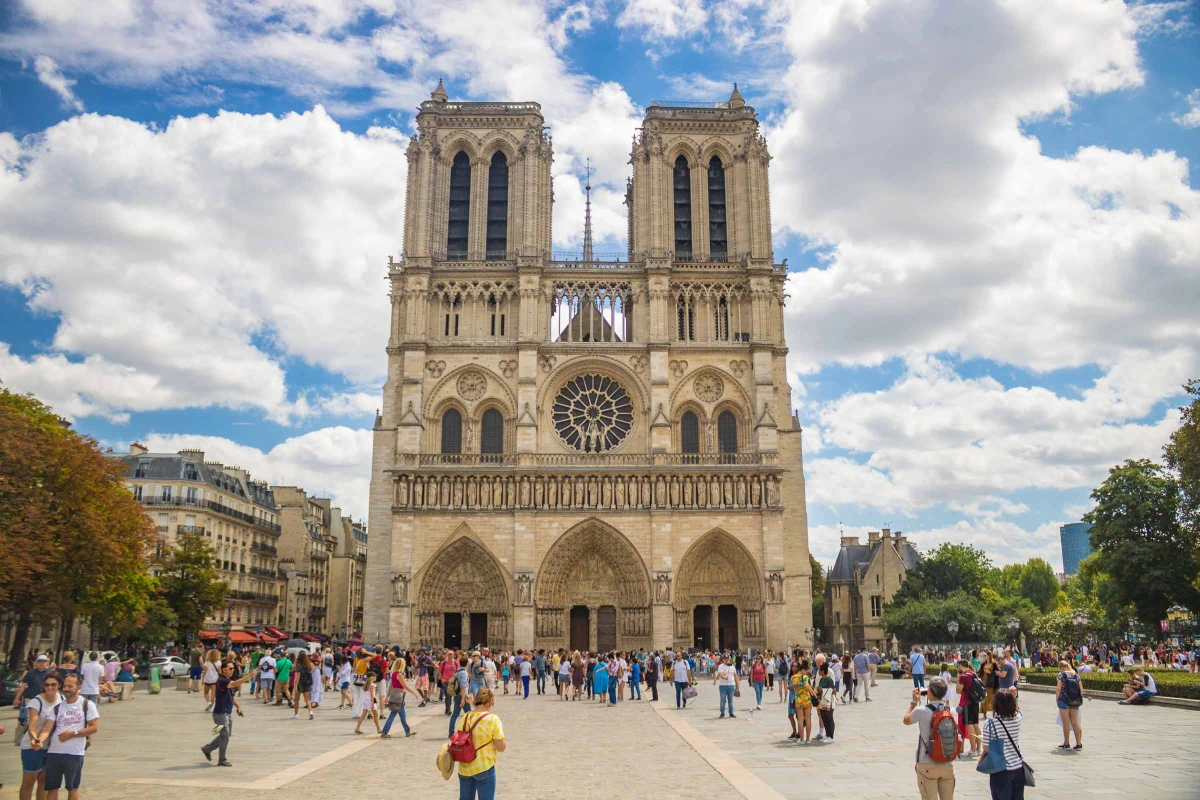
The decorative gargoyles and grotesques adorning the exterior serve both functional and ornamental purposes, channeling rainwater away from the building while adding a touch of whimsy to the overall aesthetic.Entering Notre-Dame Cathedral is a transformative experience. The vast nave stretches out before you, supported by rows of slender columns that seem to reach for the heavens. The ribbed vaults create an awe-inspiring canopy above, casting intricate patterns of light and shadow on the stone floor below.
Every element of the interior design, from the elegant triforium to the soaring clerestory windows, is meticulously crafted to create a harmonious balance between light, space, and structure. The sense of verticality and upward movement in the cathedral's design serves to elevate the human spirit and evoke a sense of divine transcendence.
Beyond its architectural magnificence, Notre-Dame Cathedral holds great spiritual significance. For centuries, it has been a site of worship, pilgrimage, and cultural identity. It has witnessed countless religious ceremonies, royal coronations, and historical events. The cathedral's significance was further solidified in literature, particularly in Victor Hugo's novel, "The Hunchback of Notre-Dame," where it served as a symbol of hope, resilience, and the enduring power of the human spirit.
Beyond its architectural beauty, Notre-Dame Cathedral holds a place in the hearts of people around the world, serving as a symbol of hope, resilience, and the enduring power of human achievement. It is a true marvel that continues to inspire and awe, reminding us of the timeless brilliance of Gothic architecture.
Exploring the Interior
Stepping inside the hallowed halls of Notre-Dame Cathedral in Paris is to embark on a captivating journey through centuries of history, spirituality, and artistic brilliance. The interior of this iconic masterpiece beckons visitors with its grandeur, its intricate details, and its profound sense of reverence.Upon entering Notre-Dame Cathedral, one is immediately struck by the vastness of the space.
The soaring nave stretches before you, supported by a forest of slender columns that seem to reach for the heavens. The sense of verticality and upward movement is palpable, instilling a sense of awe and reverence. Light filters through the intricate stained glass windows, casting a kaleidoscope of colors that dance across the stone floor, imbuing the space with a celestial aura.As one gazes upward, the eye is drawn to the clerestory windows, which punctuate the vaults with an abundance of radiant light.
These windows, adorned with vibrant stained glass, depict biblical scenes and saints, illuminating the space and inviting contemplation.The triforium, a unique feature of Notre-Dame's interior, adds yet another layer of beauty and intrigue. This narrow gallery, situated between the nave arcade and the clerestory, is adorned with delicate stone tracery and serves as a visual transition between the lower and upper levels. It offers a closer look at the craftsmanship and attention to detail that went into every aspect of the cathedral's construction.
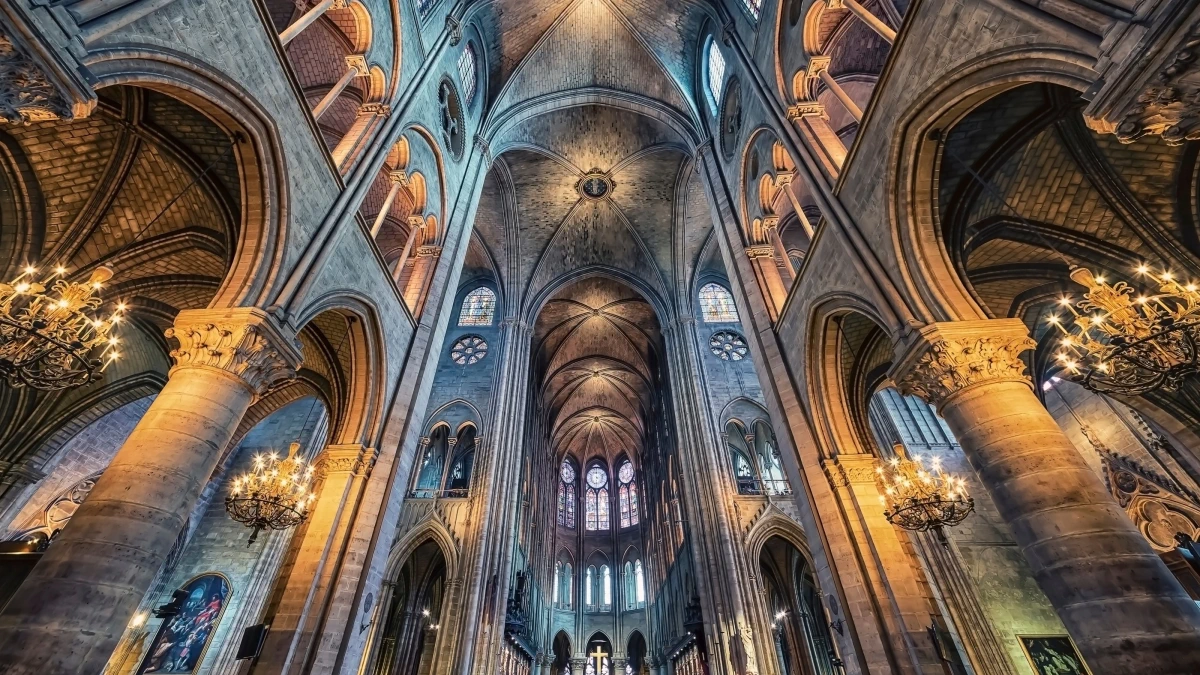
From the triforium, one can marvel at the intricate stone carvings, the interplay of light and darkness, and the sheer scale of the architectural achievement.As visitors make their way through Notre-Dame, they encounter numerous chapels dedicated to various saints and religious figures. Each chapel is a miniature work of art, adorned with statues, altarpieces, and ornate decorations. These sacred spaces provide a quiet retreat for prayer, contemplation, and spiritual reflection.
The atmosphere is suffused with a profound sense of devotion, as the centuries of worship and pilgrimage that have taken place within these walls seem to permeate the air.The organ, an integral part of Notre-Dame's interior, is a marvel in its own right. With its majestic pipes and intricate craftsmanship, it stands as a testament to the importance of music in the cathedral's worship and cultural heritage.
The powerful notes that resonate throughout the space during a recital or a religious service fill the air with a transcendent energy, elevating the spiritual experience for all present.Notre-Dame Cathedral, with its rich history and architectural splendor, has witnessed countless significant events and cultural milestones. From royal coronations to national celebrations, it has been a witness to the unfolding of history.
Its significance was further immortalized in literature, most notably in Victor Hugo's "The Hunchback of Notre-Dame," which brought the cathedral's allure and mystique to a global audience.
While the devastating fire of 2019 inflicted immense damage upon Notre-Dame, the restoration efforts that followed have rekindled hope and reaffirmed the cathedral's enduring significance. The meticulous work of skilled craftsmen and the outpouring of support from around the world serve as a testament to our shared commitment to preserving and honoring cultural heritage. Notre-Dame Cathedral remains an enduring symbol of Paris and a testament to the enduring power of art and faith.
The Organ of Notre-Dame Cathedral: A Harmonic Masterpiece
Within the grandeur of Notre Dame Cathedral in Paris resides a musical treasure that has captivated audiences for centuries—the magnificent organ. As one of the world's most celebrated instruments, the organ of Notre Dame stands as a testament to human ingenuity, musical craftsmanship, and the enduring power of music to elevate the spirit.The history of the organ in Notre Dame Cathedral stretches back over 800 years.
The earliest documented evidence of an organ in the cathedral dates back to the 13th century, making it one of the oldest organs in France. Throughout the centuries, the instrument has undergone several renovations, expansions, and reconstructions to keep pace with changing musical styles and evolving technologies.
The current organ, inaugurated in 1868, was the culmination of the vision and craftsmanship of esteemed organ builder Aristide Cavaillé-Coll.The organ of Notre Dame is a true marvel of engineering and artistry. Comprising five keyboards, or manuals, and over 8,000 pipes, it spans several stories and fills the cathedral's vast space with its commanding presence. The pipes range from majestic trumpets and sonorous reeds to delicate flutes and ethereal strings, producing a rich palette of tones that can evoke a wide range of emotions.
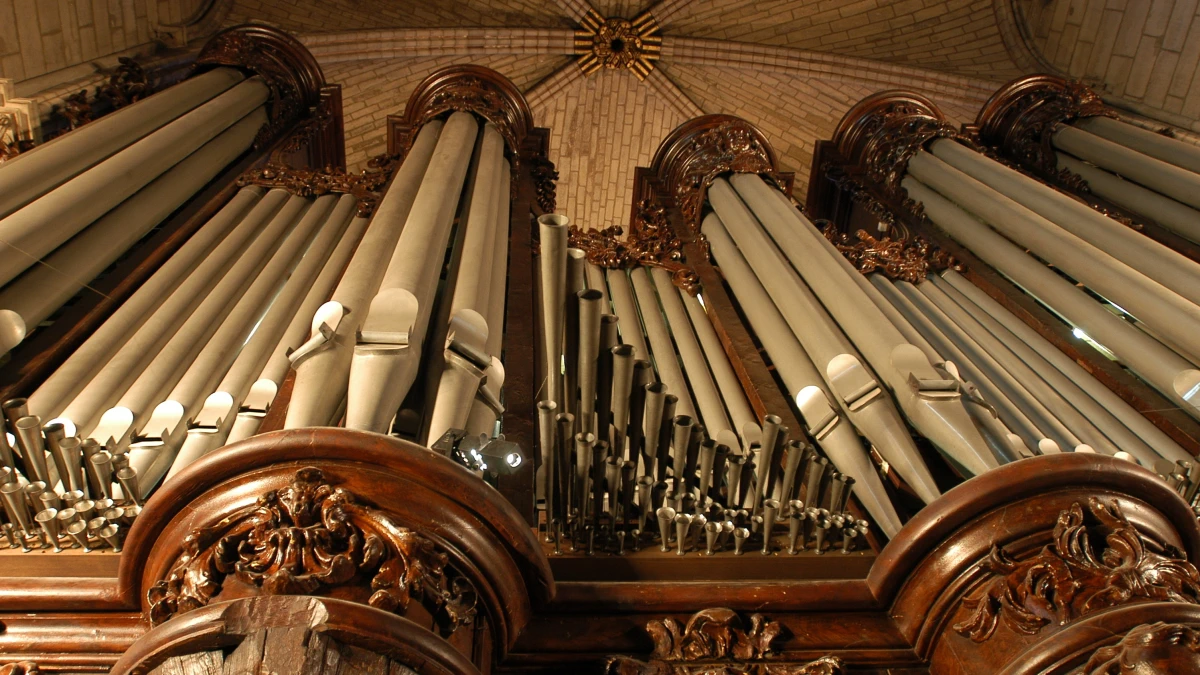
The organ's mechanical action, known as the tracker system, allows for a direct connection between the organist and the pipes, providing unparalleled control and sensitivity.One of the organ's most remarkable features is its grand organ, known as the "Grandes Orgues." Situated in the western gallery of the cathedral, the Grandes Orgues is the focal point of the instrument and commands attention with its majestic facade of gilded pipes. It serves as the centerpiece of many religious services, adding a divine aura to the liturgy and uplifting the spirits of all who hear its resounding notes.
The organ of Notre Dame Cathedral has played a vital role in the musical life of Paris and has witnessed countless historic events. It has accompanied coronations, funerals, and significant national celebrations. It has been a source of solace during times of mourning and a symbol of joy during moments of triumph. Notably, the organ has been a catalyst for the development of organ music and has attracted renowned composers and organists from across the world.
The repertoire of music performed on the organ of Notre Dame is vast and diverse, encompassing works from various musical periods and styles. From the solemn beauty of sacred music to the virtuosic brilliance of organ symphonies, the organ's versatility allows it to breathe life into a wide range of compositions. The instrument's resonant tones fill the cathedral, reverberating off the stone walls and creating a breathtaking sonic experience that is as awe-inspiring as the architecture itself.
Tragically, the devastating fire that engulfed Notre Dame Cathedral in 2019 caused significant damage to the organ. However, thanks to the swift action of firefighters and the subsequent restoration efforts, there is hope for its revival. Skilled artisans and organ builders are dedicated to meticulously reconstructing and restoring the instrument to its former glory, ensuring that future generations will have the opportunity to marvel at its splendor once again.
The organ of Notre Dame Paris is not merely an assemblage of pipes and keyboards; it is a living testament to the enduring power of music to transcend time and touch the human soul. Its majestic tones, resounding through the centuries, have provided solace, inspiration, and a connection to the divine. As the organ of Notre Dame is resurrected, its harmonies will continue to resonate within the sacred space, carrying on the tradition of musical excellence and enriching the spiritual experience of all who have the privilege to hear its magnificent voice.
What caused the fire at The Notre-Dame Cathedral?
The fire that engulfed Notre-Dame Cathedral in Paris on April 15, 2019, was a devastating event that shocked the world and sparked an outpouring of grief and support for this iconic structure. The fire, which raged for several hours, caused significant damage to the cathedral, particularly to its roof and spire. While the exact cause of the fire was not immediately determined, investigations and subsequent reports shed light on the factors that contributed to the tragic incident.
Based on the preliminary findings of the investigation, it is believed that the fire at Notre Dame Paris was accidental and resulted from a combination of factors. The primary cause was determined to be an electrical short circuit in the cathedral's attic space, commonly referred to as "the forest." This area, located beneath the roof, housed a network of ancient wooden beams that supported the structure.
The electrical short circuit likely occurred within the electrical wiring that ran through the attic, possibly due to the age and deterioration of the system. The wiring, which supplied power to various components within the cathedral, including the lighting and electrical equipment, was susceptible to wear and tear over time. The intense heat generated by the short circuit then ignited the surrounding wooden beams, leading to the rapid spread of the fire.
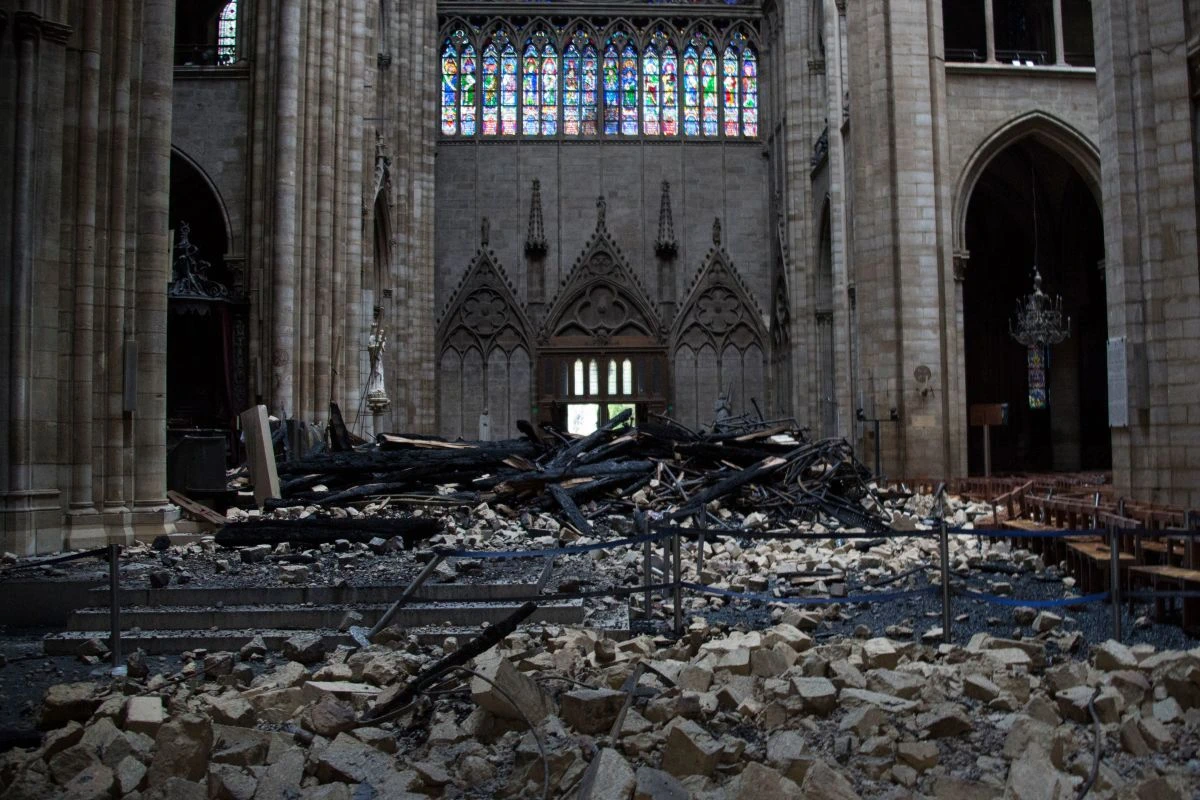
Another contributing factor to the severity of the fire was the presence of highly flammable materials in the attic. The centuries-old wooden beams, some of which dated back to the 13th century, provided ample fuel for the flames. The dry and aged nature of the wood, combined with the lack of fire-resistant materials or modern fire prevention systems, exacerbated the intensity and rapid spread of the fire.
Compounding the situation was the difficulty faced by firefighters in accessing the fire's source and controlling its progression. The architectural complexity of Notre-Dame Cathedral, with its narrow passages, limited ventilation, and elevated height, posed significant challenges for fire suppression efforts. Additionally, the cathedral's location on the Île de la Cité, surrounded by the Seine River, hindered access to water sources for firefighting operations.
The response from emergency services was swift and extensive, with hundreds of firefighters working tirelessly to bring the fire under control. Their heroic efforts helped save the cathedral's main structure, its two towers, and many precious artifacts and religious relics housed within. The prioritization of the rescue and preservation of these invaluable treasures was crucial in mitigating the overall impact of the fire.
The fire at Notre-Dame Cathedral served as a wake-up call regarding the importance of fire safety measures and the preservation of historical structures. It highlighted the vulnerability of historic buildings, particularly those with wooden elements, and underscored the need for regular maintenance, improved fire prevention systems, and ongoing monitoring to ensure their long-term preservation.In conclusion, the fire at Notre Dame Paris was a tragic event that resulted from an accidental electrical short circuit in the cathedral's attic space.
The combination of aged electrical wiring, the presence of highly flammable wooden beams, and the challenges faced by firefighters in controlling the blaze contributed to the severity of the fire. The incident served as a reminder of the importance of fire safety measures and the need for ongoing preservation efforts to protect our cultural heritage for future generations.
While the restoration work is ongoing, visitors can still access certain parts of The Notre-Dame Cathedral. The exterior and the nave are open to the public, allowing visitors to witness the ongoing restoration efforts firsthand and experience the enduring spirit of this architectural marvel.
The significance of the gargoyles on The Notre-Dame Cathedral
Perched high on the magnificent façade of Notre Dame Cathedral in Paris, a cast of captivating and otherworldly creatures gazes down upon the bustling city below. These architectural marvels, known as gargoyles, have become iconic symbols of the cathedral and hold significant cultural and historical value.
Beyond their ornamental appeal, the gargoyles on Notre Dame Paris serve multiple functions, ranging from the practical to the symbolic, leaving an indelible mark on both the architectural landscape and the collective imagination. Gargoyles are grotesque or fantastical sculptures typically made of stone, often depicting a combination of human, animal, and mythical features.
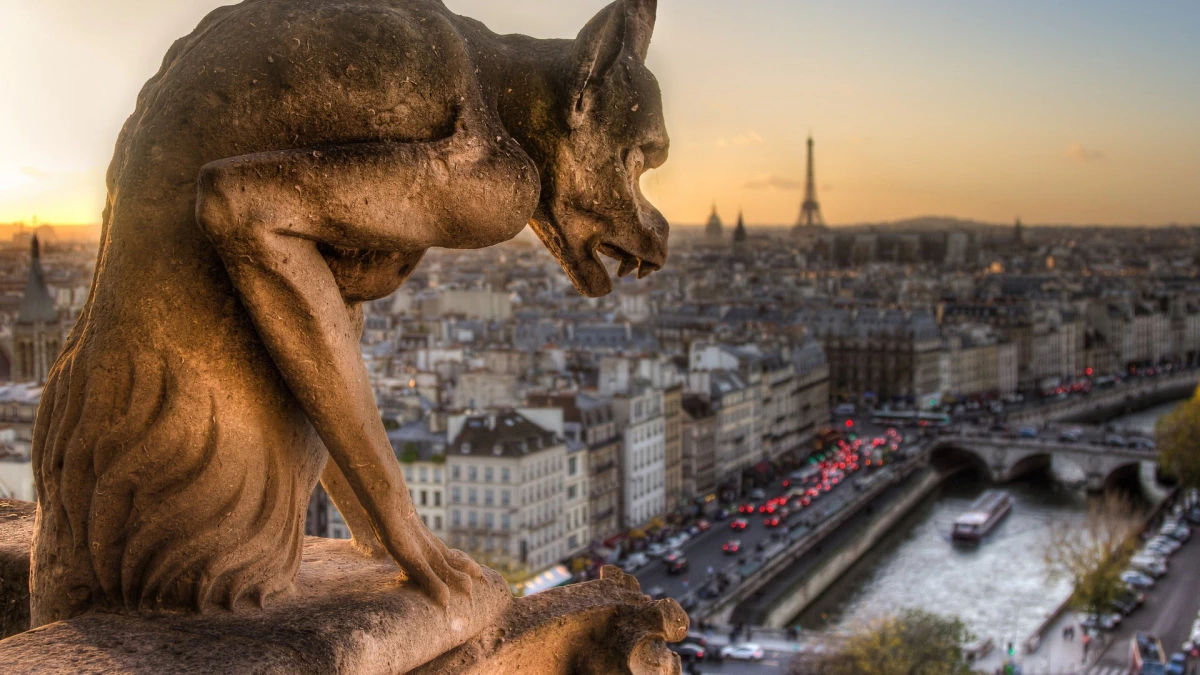
On Notre Dame Cathedral, the gargoyles serve as decorative elements, adorning the exterior walls and adding a touch of whimsy to the overall aesthetic. Their unique and often intricate designs are a testament to the creativity and craftsmanship of the medieval stone carvers who brought them to life.While their decorative purpose is evident, the gargoyles on Notre Dame Paris also serve practical functions. The primary role of gargoyles is to act as water spouts, channeling rainwater away from the building's facade and protecting the stonework from erosion.
The sculpted mouths of the gargoyles serve as outlets, directing the water through channels in their bodies and out through the open mouths or grotesque faces, thus preventing water damage to the cathedral's intricate architectural features.Beyond their utilitarian function, the gargoyles on Notre Dame Paris carry symbolic significance.
In medieval times, when many people were illiterate, the sculpted figures of gargoyles played a didactic role, visually conveying moral lessons and religious teachings. Some gargoyles represent biblical creatures, mythical beasts, or grotesque figures meant to depict evil or sin. Their presence on a sacred structure like Notre Dame was a reminder of the eternal struggle between good and evil, urging people to choose the righteous path.
The gargoyles on Notre Dame Paris also serve as guardians of the cathedral, standing watch over its sanctity. Positioned high on the walls, they have an imposing and protective presence, acting as sentinels against any malevolent forces. In this sense, the gargoyles embody the belief that the spiritual realm interacts with the physical world, providing protection and warding off evil spirits.
Additionally, the gargoyles have become integral to the folklore and cultural identity of Notre Dame Cathedral. Over the centuries, stories and legends have emerged, attributing magical or supernatural qualities to these stone creatures. Victor Hugo's novel, "The Hunchback of Notre-Dame," further immortalized the gargoyles, portraying them as characters with personalities and secret lives. These imaginative depictions have contributed to the enduring fascination and mystique surrounding the gargoyles of Notre Dame.
In conclusion, the gargoyles on Notre Dame Paris represent more than mere decorative elements. They serve as functional water spouts, guardians of the cathedral, and symbolic reminders of the eternal struggle between good and evil. Their presence adds a touch of mystique and enchantment to the architectural landscape, captivating the imagination and fostering a connection to the rich history and cultural heritage of the cathedral.
The religious services at The Notre Dame Paris
The Notre Dame Paris continues to hold regular religious services. These services are open to the public, providing visitors with the opportunity to experience the spiritual ambiance of the cathedral and participate in religious ceremonies.
Notre Dame Cathedral in Paris, a magnificent testament to Gothic architecture, has served as a spiritual haven for centuries. Within its sacred walls, religious services of profound significance and rich tradition have been conducted, offering a profound spiritual experience to those who gather to worship. The religious services at Notre Dame Paris carry deep meaning, combining centuries-old rituals, sacred music, and a sense of community, creating a divine atmosphere that resonates with visitors and believers alike.
At the heart of the religious services at Notre Dame Paris is the celebration of the Holy Mass, the central act of Christian worship. The Mass is conducted by ordained clergy, who lead the congregation in prayers, readings from Scripture, and the Eucharistic ceremony. The altar, adorned with precious ornaments and sacred relics, becomes the focal point of the service, representing the presence of Christ in the midst of the faithful.
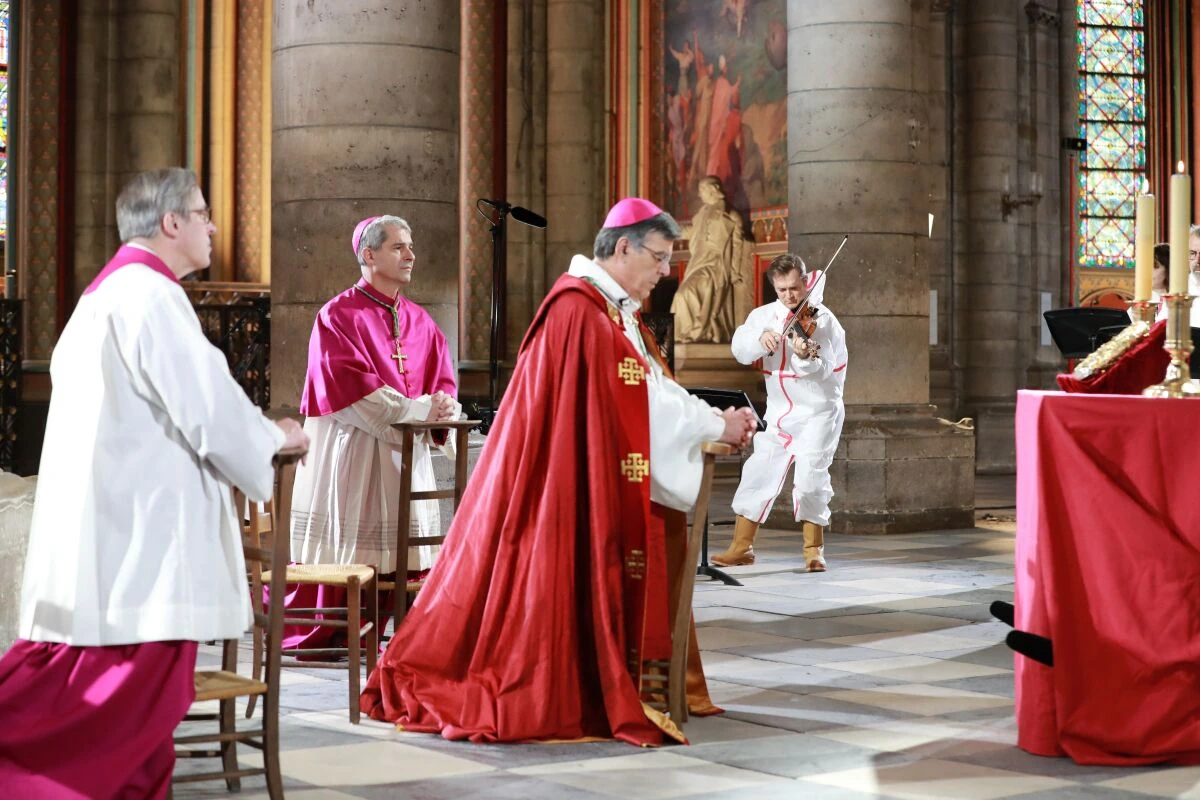
The symbols, reminding us of the intricate interplay between art, symbolism, and practicality in the realm of architectural design.Music plays an integral role in the religious services at Notre Dame Paris. The cathedral's renowned organ, with its majestic pipes and rich tones, adds a transcendent dimension to the worship experience.
Whether it be the resounding notes of a hymn, the melodic chants of a choir, or the ethereal beauty of a soloist, the music elevates the spiritual atmosphere and stirs the hearts of those in attendance. The acoustics of the cathedral enhance the sonic experience, allowing the sacred sounds to reverberate and envelop the space. The liturgical calendar shapes the religious services at Notre Dame Paris, marking the rhythm of the Christian year and commemorating significant events in the life of Christ.
Services during Advent, Christmas, Lent, Easter, and other holy days provide opportunities for believers to reflect, repent, and rejoice in the redemptive story of Jesus. These services, steeped in tradition and symbol, invite worshippers to enter into the sacred narrative and deepen their connection to the divine.
Beyond the Mass, Notre Dame Cathedral hosts other religious services, such as baptisms, weddings, and funerals. These sacramental moments mark important milestones in the lives of individuals and their families, bringing them closer to God and the faith community. The grandeur of the cathedral amplifies the significance of these occasions, making them truly memorable and spiritually transformative.
The religious services at Notre Dame Paris are not only a personal experience but also a communal one. The gathering of believers from diverse backgrounds and cultures creates a sense of unity and shared purpose. Worshippers come together as a community to offer prayers, share in the sacraments, and receive spiritual nourishment. The power of collective worship, coupled with the cathedral's sacred ambiance, fosters a sense of belonging and strengthens the bonds of faith.
Climb the towers of Notre Dame Paris
For those seeking an adventure filled with breathtaking views and a sense of history, climbing the towers of Notre Dame Cathedral in Paris offers an experience like no other. Ascending these iconic towers not only provides an opportunity to admire the architectural magnificence up close but also rewards visitors with panoramic vistas of the city, a glimpse into the inner workings of the cathedral, and a connection to the centuries of history that have unfolded within its walls.As one embarks on the ascent of the towers, a sense of excitement and anticipation builds.
The spiral staircase, worn by the footsteps of countless visitors and pilgrims throughout the years, leads upward, guiding adventurers through a labyrinth of stone. The occasional glimpse of light filtering through narrow openings heightens the sense of anticipation, drawing climbers ever closer to the pinnacle of the cathedral.
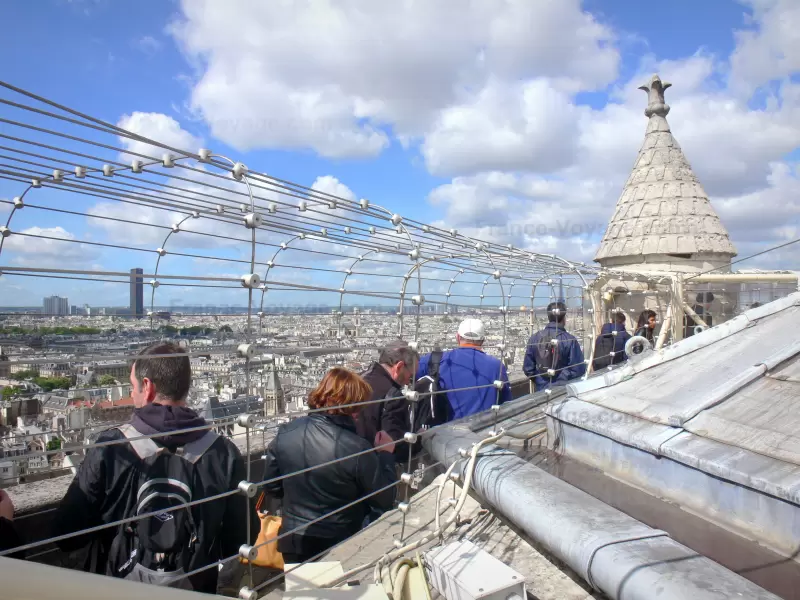
The journey to the top offers more than just a physical challenge—it is a passage through time. The towers of Notre Dame bear witness to centuries of history, from their construction in the 13th century to the present day. As climbers make their way upward, they become part of this rich tapestry, walking in the footsteps of countless individuals who have sought solace, inspiration, or simply a new perspective from these vantage points.
Reaching the top of the towers is a moment of triumph, rewarded by an awe-inspiring panorama that unfolds before the eyes. From this elevated perch, the grandeur of Paris comes into view. The cityscape stretches out in all directions, with iconic landmarks such as the Eiffel Tower, the Louvre, and the Seine River revealing themselves in the distance. The view is a testament to the genius of urban planning and the harmonious integration of history and modernity within the fabric of Paris.
The closer proximity to the architectural details of Notre Dame is another highlight of the tower climb. From this vantage point, visitors can admire the intricate stonework, the ornate gargoyles and grotesques, and the towering spire. The up-close encounter with these elements deepens the appreciation for the craftsmanship and artistry that went into creating this architectural masterpiece.
The towers also provide a unique opportunity to explore the inner workings of Notre Dame. Visitors can observe the massive bells that have chimed through the ages, bringing a sense of both joy and solemnity to the cathedral and the city. The intricate system of ropes and pulleys, used to ring the bells, offers a glimpse into the engineering marvels of the past. The historical significance and resonance of these bells become tangible as climbers witness the mechanisms that have sounded their sonorous tones for generations.
Climbing the towers of Notre Dame Paris is not merely a physical journey but also a connection to the spiritual and cultural heritage that the cathedral embodies. It is an opportunity to forge a personal link with the past, to witness the architectural splendor of a bygone era, and to appreciate the enduring legacy of this iconic structure. The experience offers a perspective that extends beyond the ordinary, inviting climbers to see the world from a new height, both literally and metaphorically.
The Bells of Notre-Dame Cathedral
High in the towers of Notre-Dame Cathedral in Paris, a mighty bell named "Emmanuel" stands as a powerful symbol of the cathedral's enduring legacy and a voice that has resonated through the ages. The bell of Notre Dame, known for its majestic presence and sonorous tones, holds a significant place in the hearts of Parisians and visitors alike. It represents the spiritual and cultural heritage of the cathedral and serves as a testament to the power of sound in conveying both joyous celebrations and solemn moments.
"Emmanuel," the largest and most renowned of the Bells of Notre-Dame Cathedral, has a storied history that spans several centuries. Cast in 1681, this magnificent bell weighs over 13 tons and stands as a testament to the skilled craftsmanship of the foundry workers who created it. Its name, "Emmanuel," translates to "God with us," signifying the divine presence within the cathedral and the spiritual connection it fosters.
The resonance of the bell is unmatched, carrying the weight of history and countless significant events. From its vantage point high above the city, "Emmanuel" has pealed to mark coronations, royal weddings, and national celebrations. Its powerful tolls have echoed through the streets, uniting the people of Paris in moments of triumph and solemnity.

In addition to its role in public ceremonies, the bell of Notre Dame has also played a vital role in religious services within the cathedral. Its deep, melodious tones have filled the sacred space, reverberating through the nave and evoking a sense of awe and reverence. The sound of the bell during the celebration of the Mass or the Angelus, a Catholic devotion honoring the Annunciation, connects the faithful to the divine, reminding them of the sacredness of their worship and the rich tradition of the cathedral.
"Emmanuel" is more than a mere instrument of sound; it is a guardian of the cathedral and a symbol of resilience. Throughout its history, the bell has survived tumultuous times, including the French Revolution, during which many other bells were destroyed. It has weathered the passage of time and stood witness to the evolving landscape of Paris. Even during the devastating fire of 2019, "Emmanuel" managed to survive, offering hope and a rallying cry for the restoration efforts.

Beyond its physical presence, the bell of Notre Dame carries a spiritual significance that transcends its material form. It symbolizes the enduring faith and resilience of the people, reminding them of the enduring power of God's presence in their lives. Its tolling serves as a call to prayer, inviting both believers and non-believers to pause, reflect, and find solace within the embrace of the cathedral.
Access to the cathedral
As of the tragic fire in 2019, access to the interior of Notre-Dame Cathedral has been temporarily suspended, and visitors are currently not allowed inside. The restoration efforts and necessary safety measures have necessitated the closure of the cathedral to the public. It is expected that access will be restored once the restoration work is completed, and the necessary safety precautions are in place. For updates on the reopening and access to the interior, it is advisable to consult the official channels of Notre-Dame Cathedral or relevant authorities responsible for its restoration.
In a moment of great significance, Napoléon, with his grand declaration of reinstating church usage, orchestrated a magnificent ceremony within the hallowed walls of Notre-Dame. This extraordinary event, marked by his iconic self-coronation, propelled Notre-Dame into a newfound prominence.
Site location: 6 Parvis Notre-Dame - Pl. Jean-Paul II, 75004 Paris
GPS coordinates: 48.853290, 2.348985
Google Photos: Click here
For more content and exciting articles, follow our site, where we regularly update our column to bring you the best ideas for events or things to do in Paris!






